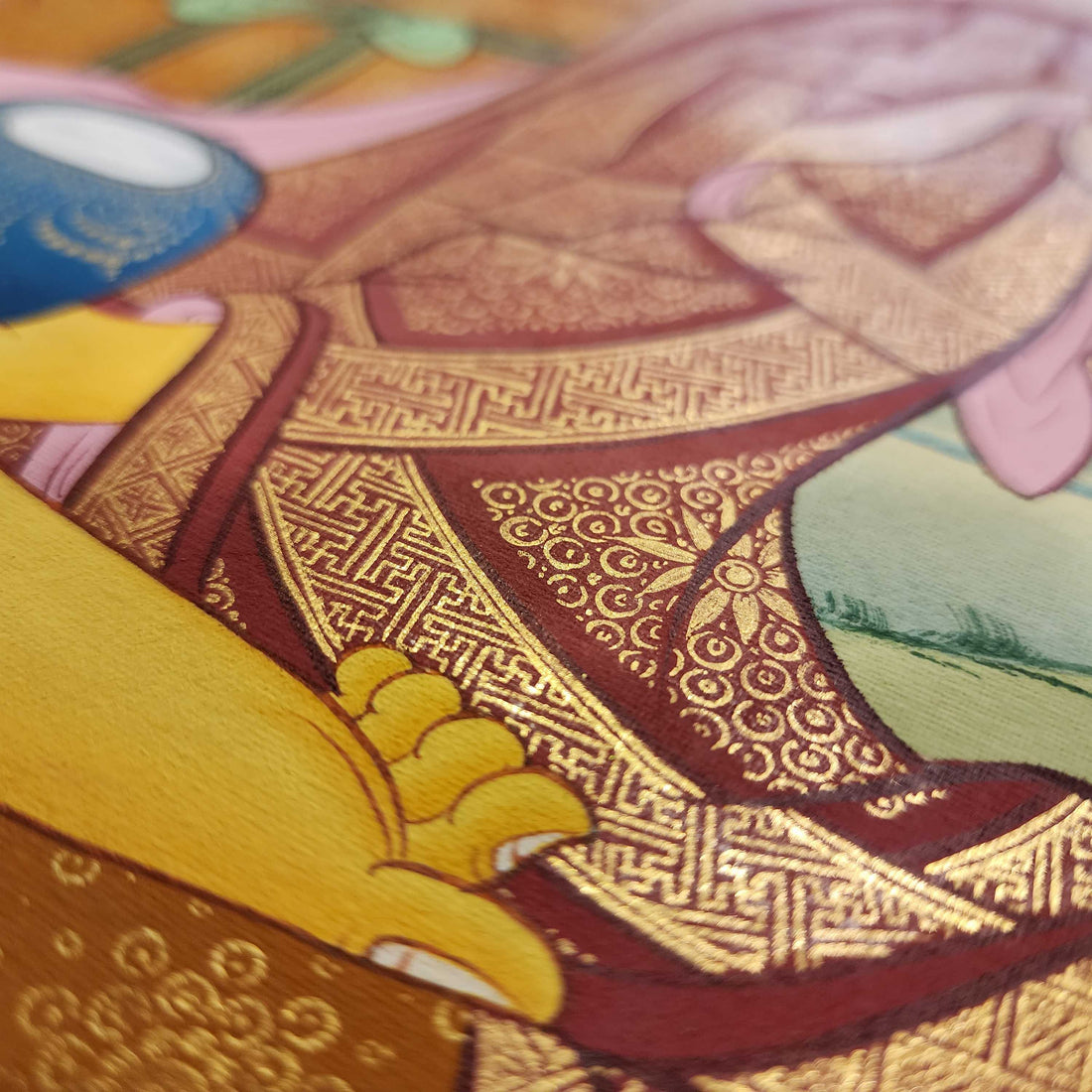
Green Tara: The Goddess of Compassion and Swift Action
Share
Introduction
Among the most beloved figures in Tibetan Buddhism, Green Tara embodies compassion in action. Ever ready to protect and guide beings from suffering. In Thangka art, her vibrant green hue and graceful posture reflect her boundless energy and compassion.
Who Is Green Tara?
Green Tara (Sanskrit: Syamatara) is known as the “Mother of All Buddhas” and the Protector from Fear.
She is believed to have arisen from the tears of Avalokiteshvara, the Bodhisattva of Compassion, to help beings swiftly overcome obstacles.
Symbolism in Thangka Art
— Green Color: Symbolizes enlightened activity, protection, and growth.
— Posture: One leg folded (meditation), the other extended (action). Showing her readiness to help.
— Lotus Flower: Represents purity and spiritual awakening
— Hand Gestures (Mudras):
Right hand — gesture of giving and protection.
Left hand — holds a blue lotus, symbolizing wisdom.
Spiritual Meaning
— Green Tara represents fearlessness, protection, and quick compassion.
— Practitioners invoke her to remove fears, obstacles, and negative emotions.
— Her mantra, “Om Tare Tuttare Ture Soha,” is chanted for peace and spiritual support.
Depiction in Thangka Art
Artists portray Green Tara surrounded by lush landscapes or lotuses, radiating calm strength.
The detailed brushwork and colors bring to life her compassionate gaze and nurturing presence.
Devotional Practice
— Thangkas of Green Tara are used in daily meditation and offerings.
— Practitioners visualize her presence to receive blessings and emotional healing.
— Her energy is seen as swift and motherly. Always responding to sincere prayers.
Conclusion
Green Tara is more than a symbol; she is a living presence of compassion and courage. Through her Thangka, practitioners find guidance, comfort, and strength to face life’s challenges with grace and mindfulness.
